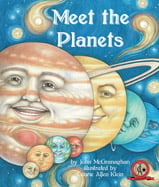Alignment to Standards for MD

| Grade | Number | Standard |
|---|---|---|
| 1 | SC-1.2.0.D.2. | Recognize that there is a relationship between the sun and the earth. |
| 2 | SC-2.2.0.D.1. | Observe and describe changes over time in the properties, location, and motion of celestial objects. |
| 2 | SC-2.2.0.D.1.a | Identify and record observable properties of the sun, moon, and stars. |
| 2 | SC-2.2.0.D.1.b | Identify and record the apparent visible changes in the shape of the moon over two months of observations. |
| 2 | SC-2.2.0.D.1.c | Observe and record changes in the location of the sun and moon in the sky over time. |
| 2 | SC-2.2.0.D.1.d | Describe and compare the patterns of change that occur in the sun and the moon. |
| 2,3 | SS-2&3.4.0.A.3. | Examine how technology affects the way people live, work and play |
| 3 | SS-3.6.0.E.1.e | Categorize information obtained from surveys and field work |
| 3 | SS-3.6.0.E.2.d | Construct various types of graphic organizers, maps, and charts to display information |
| 4 | SC-4.2.0.D.1.b | Identify the sun as the Earths closest star. |
| 4 | SC-4.2.0.D.1.c | Recognize that stars are like the sun, some are smaller and some larger. |
| 4 | SC-4.2.0.D.1.d | Recognize and describe that the stars are not all the same in apparent brightness. |
| 5 | SC-5.2.0.D.1. | Identify and compare properties, location, and movement of celestial objects in our solar system. |
| 5 | SC-5.2.0.D.1.a | Recognize that like all planets and stars, the Earth is spherical in shape. |
| 5 | SC-5.2.0.D.1.b | Identify the properties of the planet Earth that make it possible for the survival of life as we know it: Temperature, Location, Presence of an atmosphere, Presence of water (solid, liquid, and gas) |
| 5 | SC-5.2.0.D.1.c | Compare the properties of at least one other planet in our solar system to those of Earth to determine if it could support life, as we know it. |
| 5 | SC-5.2.0.D.1.e | Provide evidence that supports the idea that our solar system is sun-centered. |
| 5 | SC-5.2.0.D.2. | Recognize and describe the causes of the repeating patterns of celestial events. |
| 5 | SC-5.2.0.D.2.b | Recognize and describe that the rotation of planet Earth produces observable effects: The day and night cycle. |
| 5 | SC-5.2.0.D.2.c | Recognize and describe that the rotation of planet Earth produces observable effects: The apparent movement of the sun, moon, planets, and stars |
| 5 | SC-5.2.0.D.2.e | Recognize and describe that the revolution of the planet Earth produces effects. |
| 5 | SC-5.2.0.D.2.g | Recognize and describe the causes of the repeating patterns of celestial events: Length of year |
| K | SC-K.2.0.D.1. | Observe celestial objects that are visible in the day and night sky. |
| K | SC-K.2.0.D.1.a | Identify and describe the sun, moon and stars. |
| K | SC-K.2.0.D.1.b | Describe ways in which the daytime and nighttime skies are different. |
| K | SS-K-4.0.A.3.a | Begin to be aware of technology and how it affects life |